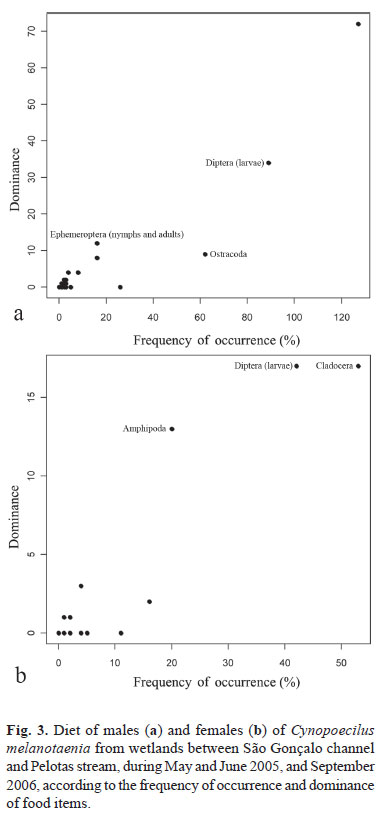Most Rivulidae fishes are popularly known as annual fishes which live in ephemeral environments such as pools, that obligatorily dry out seasonally causing the death of adult individuals. They have unique biological characteristics such as small body size, early sexual maturation, continuous reproduction, an elaborated courtship behavior, and a great reproductive capacity among fishes. The rivulids are widely distributed in North, Central and South America. In this study, the diet and reproductive biology of Cynopoecilus melanotaenia was analyzed. A total of 263 specimens were collected and the analysis of 233 gastrointestinal contents revealed an invertivorous diet composed mainly of small crustaceans (Cladocera, Amphipoda, and Ostracoda) and immature insects (Chaoboridae, Culicidae, Syrphidae, but mainly Chironomidae larvae). Lepidophagy on male's diet was also registered. Fecundity was estimated by analyzing 59 pairs of mature ovaries and ranged from 2 to 157 oocytes (mean, 19 ± 26[SD]). The species has fractional spawning, a strategy to increase the chance of survival to prolonged depletions. This study is the first to investigate the reproductive biology of C. melanotaenia. The results confirmed the opportunistic character of the rivulid C. melanotaenia and provided unreported reproductive information that may aid conservation of the species.
Aplocheiloidei; Diet; Fecundity; Invertivorous; Opportunism







